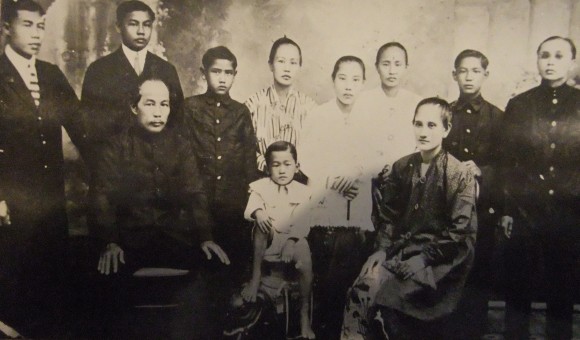When I first heard of it I was intrigued and excited. Scientific proof. My eldest brother said his genome profile is 86.3% Chinese DNA and 13.7% Malay DNA. Most of the time, our knowledge of our lineage is based on records in Mandarin script, or on hearsay and anecdotes of parents and relatives, and old photographs or inherited family heirloom. When my eldest brother announced casually to the siblings about scientific proof, it came with the force of irrefutable fact. All along my mum had told us we have Peranakan lineage. We believed it. I mean our mum couldn’t be wrong on this. I never got to see my grandparents or great grandparents at all – they passed away before I was born. I took it for granted that I was Chinese from my dad’s side and Peranakan from my mum’s side. Now its fact.
HOW IT HAPPENED
My eldest brother, Colin Chee, is the current President of The Singapore Peranakan Association(TPAS). The Genome Institute of Singapore (GIS) collaborated with the Peranakan Association in a genome study project. They collected blood samples from 177 volunteer members (of which my brother is one) of the association and other community members in 2018, studied them, and got their research accepted for publication in the Molecular Biology and Evolution academic journal published by Oxford University Press. The analysis concluded that 90% of volunteers had an average of 90% Chinese DNA and 10 % Malay DNA. The rest showed 100% Chinese DNA.
Colin wrote in the association news: “The study is a revelation. To TPAS, the project’s findings have, for the very first time, given scientific credence to our community’s family oral histories and the smattering of early travellers’ eye-witness reports that the Peranakans are descended from the mixed unions of early traders from China, India and even Europe with local Malay women in Southeast Asia. This does not mean those with 100% Chinese DNA are any less Peranakan than those with mixed Chinese-Malay DNAs”. (Read the full writeup HERE).
Our two living aunties, Lily and Florence (aged 95 and 87), both insisted that our ancestry is Dayak blood. Our maternal grandparents all lived in Kuching, Sarawak. Well, Dayak is a general term for those indigenous tribal peoples from the interior of Borneo who then moved to the coastal areas and some have mingled with or have been absorbed into the Malay population. I do not know what to make of this but having grown up to trust scientific research, I will have to accept what science concluded. I do not know if genome grids have a separate category for Dayaks or if they are all subsumed under Malay. This is one for the scientists to give the final answer. Our paternal grandparents both emigrated from Fuzhou in 1893, the provincial capital of Fujian Province in China. You can read more about this in an earlier piece I wrote HERE.
SO WHAT?
What were the implications of this knowledge for me? For one thing, I have begun to make all kinds of illogical connections between my 13% Malay DNA and my affinity with Malay food, Malay language and culture. “Maybe that is why I like lontong, rendang, mee rebus, nasi lemak and nasi padang (but so do many other Singaporean Chinese with 100% Chinese DNA)”. “Maybe that was why I bought Indonesian language learning tools and Bible, and tried to opt my children into Malay instead of Mandarin classes in school but was not permitted by the Ministry of Education policy (but this could merely be because I wanted to spare my children the trauma I experienced trying to learn Mandarin)”. Well you get the point. I was trying to connect all kinds of dots.
On the positive side, I am now interested in knowing more about this unexplored side of my ancestry. I have mostly seen myself as a Hokkien Chinese. Now I need to learn more about my Peranakan roots.
